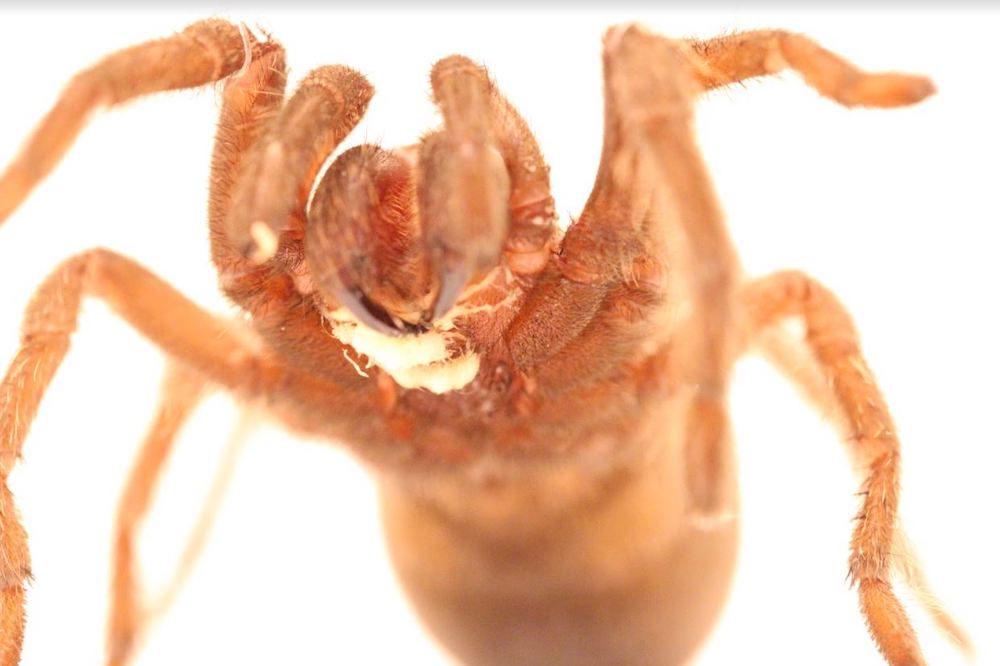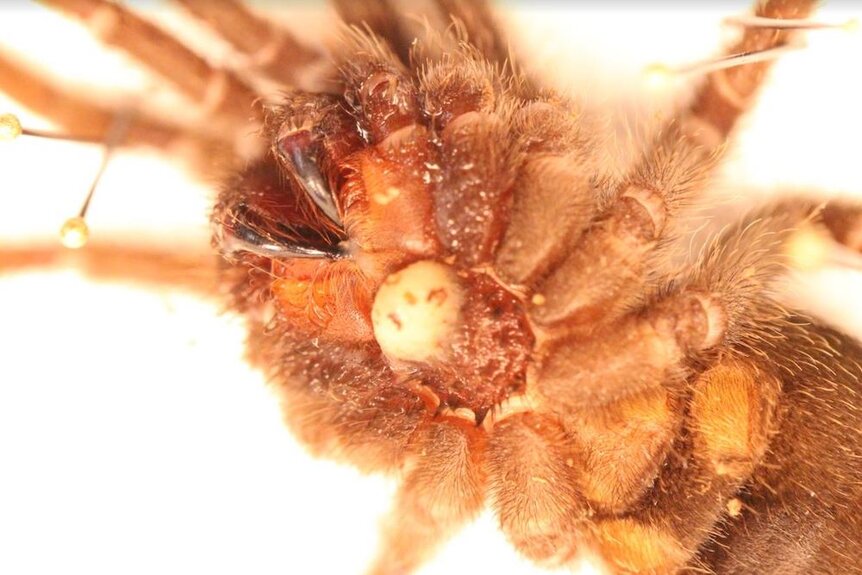Create a free profile to get unlimited access to exclusive videos, sweepstakes, and more!
What spiders are afraid of: Bacteria eating worms drive tarantulas to starvation
We didn't think we were going to feel bad for spiders today.

Arachnophobia is the technical term for an irrational or severe fear of spiders. It’s also the name of an incredibly campy yet satisfying horror film from 1990. In the movie, a previously undiscovered species of spider makes its way to California by hitching a ride in a casket. Once there, it breeds with another species and begins a hostile takeover of the town. It would have succeeded too, if not for Jeff Daniels.
In honor of his heroic fictional efforts, Daniels has now been immortalized in the naming of a newly discovered real-world animal. This time, a species of parasitic nematode. Unlike the villainous spiders of Arachnophobia, these nematodes aren’t particularly large, aggressive, or any danger to humans. They are, however, the cause of a horrific death to the spiders they infect.
The nematode worms, now known as Tarantobelus jeffdanielsi, were first uncovered by a wholesale breeder of tarantulas in 2018. The breeder noticed that some of their spiders were dying from an unknown cause and their corpses were marked by a mysterious white mass around their mouths.
Specimens were sent to Adler Dillman, a professor from the Center for Infectious Disease and Vector Research at the University of California, Riverside. Dillman quickly recognized the mass as an infection of parasitic nematodes and went to work studying them. The results of that study were published in the Journal of Parasitology.
Nematodes are some of the most abundant multicellular animals on the planet with more than 20,000 described species. They’re also a common subject of research, particularly the species C. elegans, which is used as a model organism for a whole host of studies, owing to its comparatively simple genome and body structure.
Moreover, nematodes are prodigious parasites. As far as we know, for every other animal on the planet, there is at least one nematode species capable of infecting it. T. jeffdanielsi marks the second discovered species which infects tarantulas.
"In the tarantula trade, my understanding is it's not that common, but when it happens, it's a major problem. There's no treatment. When it happens, your tarantula is going to die." Dillman told SYFY WIRE. "As I talked to other people who do collecting in the wild, it sounds to me like it's not terribly uncommon. I think there are a lot of tarantula infections that we just don't know about because we're not looking for them."
Inspection of the nematode infection reveals some interesting facts and a lot of open questions about the parasitic relationship. Dillman and team found that the worms set up shop on and around the mouth parts, known as pedipalps, and don’t appear to infect or consume other parts of the body. In fact, the worms don’t appear to consume the spiders at all. Instead, researchers believe the nematodes feed on bacteria present around the mouth. This hypothesis is supported by laboratory experiments in which they observed the worms consuming e. coli bacteria.
"Our hypothesis is that it comes from food. We think the nematode associates with other insects in some way and is carried to the spider when they eat. We tried a variety of ways of infecting tarantulas by mixing the nematodes in water and pipetting them onto the mouth and it didn't work. Then we got crickets and cockroaches and exposed them to the nematode, then put them in the container with the tarantula and those got infected," Dillman said.
An unfortunate side effect of their presence, at least for the spiders, is the strange and ultimately deadly combination of behavioral changes. Once infected, the spiders begin walking on the tips of their legs which, in and of itself, might not cause their untimely death. What does prove fatal is the effect on their mouths. Through some as yet unknown mechanism, T. jeffdanielsi causes the pedipalps to become paralyzed, preventing the spiders from eating.
"It's possible the nematodes are excreting something. It's possible they come with some bacteria and the bacteria is growing and that's having some secondary effect. We didn't see any evidence of mechanical damage or open wounds. What's clear is the mouth parts stop working and that eventually kills the tarantulas," Dillman said.
The amount of time between infection and death is variable, depending on how recently the spiders have last eaten. Tarantulas don’t need to eat very often and, because the nematodes don’t kill them directly, death by starvation can take months. During this time, the worms reproduce rapidly. Experiments show each worm pumps out an average of 158 offspring over their 11-day lifespan, meaning that generations of worms can live and die during a single infection.
Scientists are hoping to complete additional experiments in the future to better understand the parasite and hopefully develop preventative or therapeutic treatments for infections.
We almost have to applaud T. jeffdanielsi. They managed to flip the script, changing spiders from terrifying predators to tragic victims. You have to be truly terrifying in order to get us to root for spiders.



























